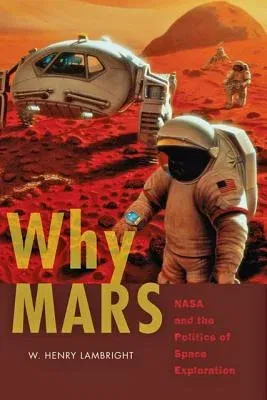Traces NASA's torturous journey to Mars from the fly-bys of the 1960s
to landing rovers and seeking life today.
Mars has captured the human imagination for decades. Since NASA's
establishment in 1958, the space agency has looked to Mars as a
compelling prize, the one place, beyond the Moon, where robotic and
human exploration could converge. Remarkably successful with its roaming
multi-billion-dollar robot, Curiosity, NASA's Mars program represents
one of the agency's greatest achievements.
Why Mars analyzes the history of the robotic Mars exploration program
from its origins to today. W. Henry Lambright examines the politics and
policies behind NASA's multi-decade quest, illuminating the roles of key
individuals and institutions along with their triumphs and defeats.
Lambright outlines the ebbs and flows of policy evolution, focusing on
critical points of change and factors that spurred strategic
reorientation. He explains Mars exploration as a striking example of
"big science" and describes the ways a powerful advocacy
coalition--composed of NASA decision makers, the Jet Propulsion
Laboratory, the Mars academic science community, and many others--has
influenced governmental decisions on Mars exploration, making it, at
times, a national priority.
The quest for Mars stretches over many years and involves billions of
dollars. What does it take to mount and give coherence to a
multi-mission, big science program? How do advocates and decision makers
maintain goals and adapt their programs in the face of opposition and
budgetary stringency? Where do they succeed in their strategies? Where
do they fall short? Lambright's insightful book suggests that from Mars
exploration we can learn lessons that apply to other large-scale
national endeavors in science and technology.

